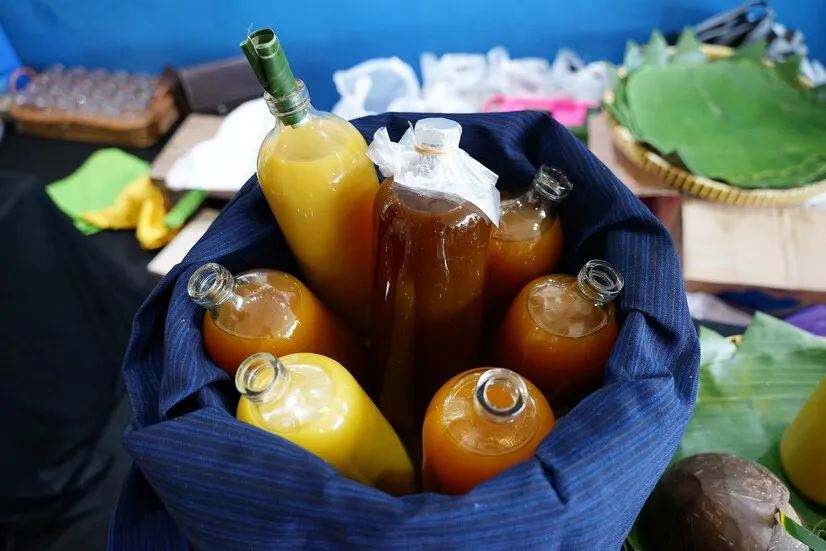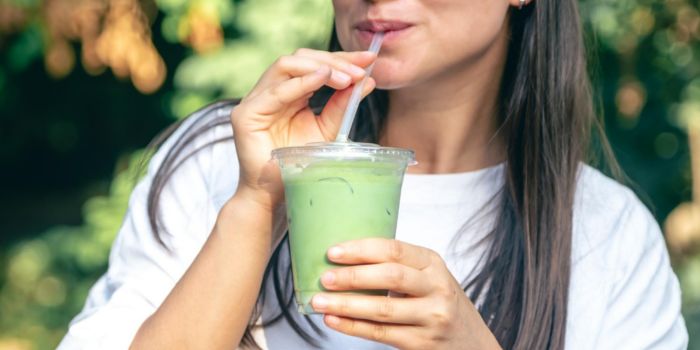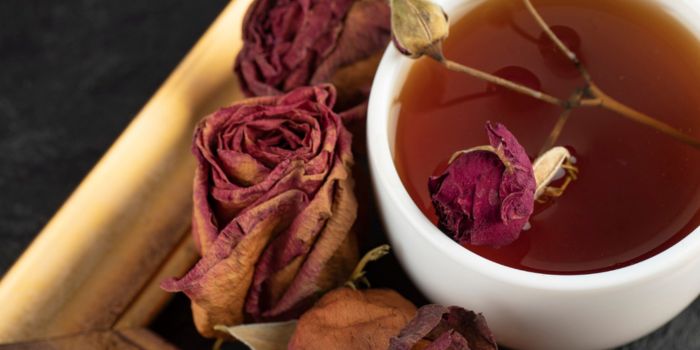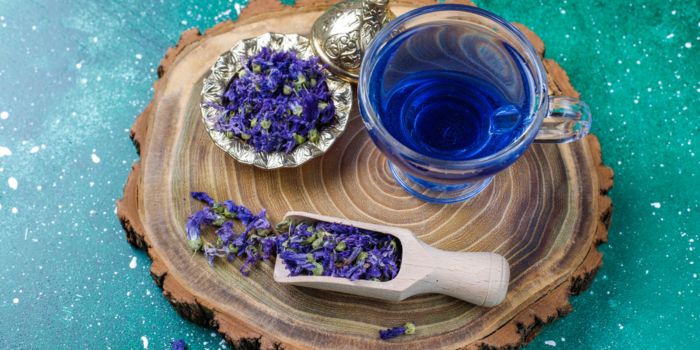Hey there, health enthusiasts and curious minds! Ready to dive into the world of jamu drinks from Indonesia? Trust me, you’re in for a treat. These ancient herbal concoctions aren’t just your average wellness trend – they’re a time-tested tradition that’s been keeping Indonesians healthy for centuries. And now, they’re making waves globally as a natural remedy for modern-day health woes. So, grab your favorite mug, settle in, and let’s explore the fascinating world of jamu!
What’s the Deal with Jamu Drinks?
Picture this: You’re strolling through a bustling Indonesian market, the air thick with the aroma of spices and herbs. Suddenly, you spot a vibrant display of bottles filled with golden, earthy-hued liquids. That’s jamu, my friends – Indonesia’s best-kept health secret (well, not so secret anymore).
Jamu drinks from Indonesia are basically nature’s multivitamin in a glass. These traditional herbal beverages have been part of Indonesian culture for over a thousand years. Talk about staying power! They’re made from a mind-boggling array of natural ingredients – we’re talking roots, bark, flowers, seeds, and leaves. Each recipe is carefully crafted to target specific health concerns or boost overall wellness.
But here’s the kicker – jamu isn’t just some ancient relic. It’s evolving, adapting, and finding its place in our modern world. From hip cafes in Jakarta to wellness retreats in Bali, jamu drinks are experiencing a serious glow-up. And it’s not just Indonesians who are sipping on this stuff. Health-conscious folks worldwide are catching on to the jamu craze.
A Journey Through Time: The History of Jamu
Alright, history buffs, this one’s for you. The story of jamu drinks from Indonesia is like a fascinating time capsule of Indonesian culture and traditional medicine. Let’s hop in our imaginary time machine and take a trip back to where it all began.

Ancient Roots
Jamu’s origins can be traced back to the ancient Javanese kingdoms of Indonesia. We’re talking way back – like 8th century back. Imagine royal courts where skilled herbalists concocted potions for kings and queens. These early jamu makers were like the rock stars of their time, holding the secrets to health and longevity.
The knowledge of jamu was initially passed down through oral traditions and eventually recorded in ancient Javanese texts. These texts were like the WebMD of their time, detailing various herbal recipes and their medicinal properties.
From Palace to People
As time went on, jamu drinks from Indonesia weren’t just for the elite anymore. The knowledge spread throughout the archipelago, with each region developing its own unique blends based on local ingredients. Jamu became a part of everyday life, with families passing down recipes through generations.
Colonial Influence and Scientific Interest
When the Dutch colonized Indonesia, they couldn’t help but notice the widespread use of jamu. Some dismissed it as primitive medicine, but others were intrigued. Dutch botanists and physicians began studying jamu, documenting the plants used and their potential benefits. This period marked the beginning of scientific interest in jamu drinks from Indonesia.
Jamu in Modern Times
Fast forward to the 20th century, and jamu started to get the recognition it deserved. The Indonesian government began efforts to standardize and regulate jamu production. Research institutions were established to study the efficacy of traditional jamu recipes.
Today, jamu drinks from Indonesia are experiencing a renaissance. They’re being packaged in modern, convenient forms, studied in laboratories, and exported around the world. It’s a perfect blend of ancient wisdom and modern science – pretty cool, right?
The Magic Ingredients: What Goes into Jamu Drinks?
Now that we’ve got the backstory, let’s dive into the good stuff – what actually goes into these magical jamu drinks from Indonesia? Brace yourself, because the list is pretty impressive.
The Superstar Ingredients
- Turmeric (Kunyit)
- The golden child of jamu, turmeric is known for its anti-inflammatory and antioxidant properties.
- Fun fact: The jamu classic “Kunyit Asam” (turmeric and tamarind) is like the peanut butter and jelly of the jamu world – a match made in herbal heaven.
- Ginger (Jahe)
- This spicy root is a digestive aid and natural pain reliever.
- Try “Wedang Jahe” on a cold day – it’s like a warm hug for your insides.
- Tamarind (Asam Jawa)
- Packed with vitamins and minerals, tamarind adds a tangy kick to jamu drinks.
- It’s also great for digestion and can help lower cholesterol.
- Lemongrass (Sereh)
- This fragrant grass is a natural stress-buster and can help with insomnia.
- It’s also said to have antimicrobial properties – take that, germs!
- Galangal (Lengkuas)
- Often confused with ginger, galangal has its own unique flavor and health benefits.
- It’s great for boosting the immune system and fighting inflammation.
Related Article: Traditional Indonesian Herbal Drinks For Natural Immunity
Supporting Cast
- Cinnamon (Kayu Manis): Helps regulate blood sugar and has antimicrobial properties.
- Kencur (Lesser Galangal): Often used for its expectorant and carminative properties.
- Temulawak (Javanese Ginger): Known for its hepatoprotective effects.
- Pandan Leaves: Adds a sweet aroma and is believed to have relaxing properties.
- Lime (Jeruk Nipis): A vitamin C powerhouse that adds a refreshing zing.
The Base Players
- Honey: A natural sweetener that also has antibacterial properties.
- Palm Sugar: Adds sweetness and is lower on the glycemic index than regular sugar.
- Coconut Water: Provides hydration and electrolytes.
The beauty of jamu drinks from Indonesia lies in their versatility. Each recipe can be tweaked and personalized based on individual needs and preferences. It’s like having a natural pharmacy at your fingertips!
Jamu 101: Popular Types and Their Benefits
Alright, class is in session! Let’s break down some of the most popular jamu drinks from Indonesia and what they can do for you. Remember, while these drinks have been used traditionally for centuries, always consult with a healthcare professional before using them for medicinal purposes.
1. Kunyit Asam (Turmeric Tamarind)
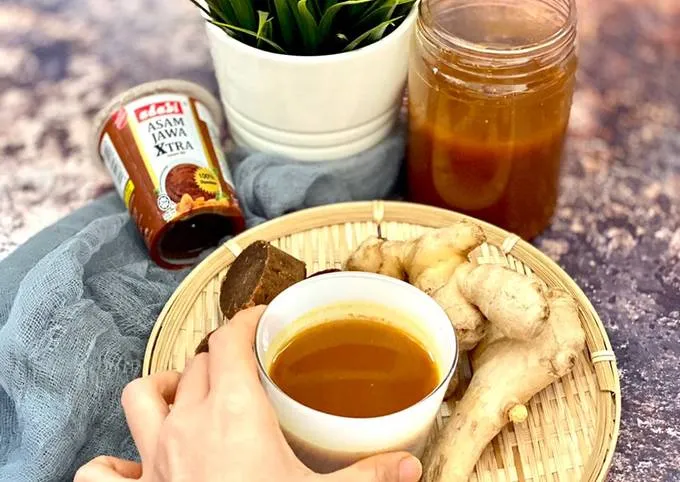
Ingredients: Turmeric, tamarind, palm sugar
Benefits:
- Relieves menstrual cramps
- Boosts immunity
- Aids digestion
- Acts as a natural detoxifier
Fun Fact: This bright yellow drink is often jokingly called “Indonesian Gatorade” because of its refreshing and energizing properties.
2. Beras Kencur
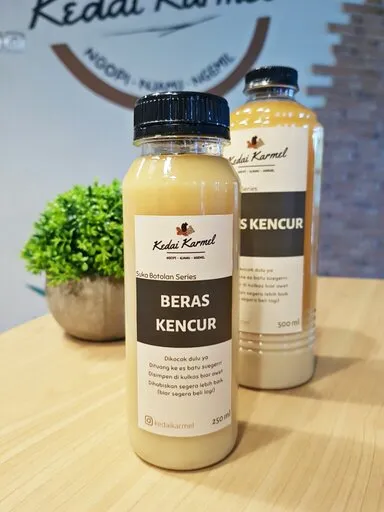
Ingredients: Rice, kencur (lesser galangal), ginger, cinnamon
Benefits:
- Increases appetite
- Relieves fatigue
- Helps with coughs and colds
- Improves blood circulation
Pro Tip: This jamu is perfect for those days when you’re feeling under the weather. It’s like a warm, spicy hug for your immune system.
3. Jamu Pahitan
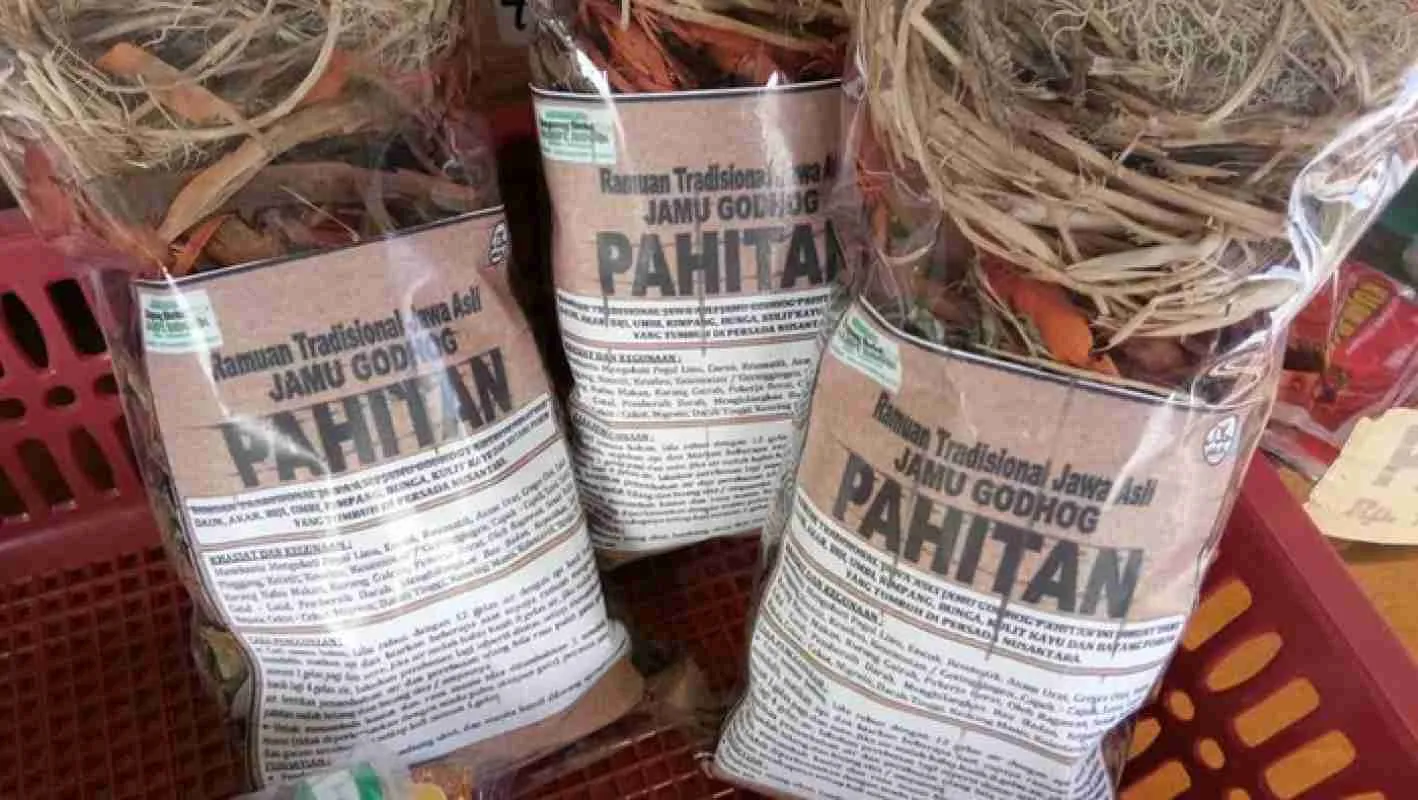
Ingredients: Various bitter herbs like sambiloto and brotowali
Benefits:
- Lowers blood sugar levels
- Reduces cholesterol
- Improves liver function
- Acts as a natural antibiotic
Warning: As the name suggests (pahit means bitter), this one’s not for the faint of heart. But hey, no pain, no gain, right?
4. Temulawak (Javanese Ginger)
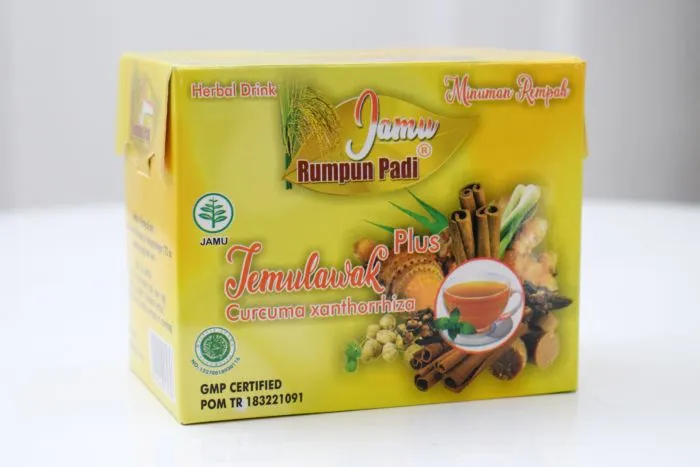
Ingredients: Temulawak, ginger, tamarind
Benefits:
- Improves liver function
- Boosts appetite
- Aids digestion
- Increases milk production for nursing mothers
Fun Fact: Temulawak is sometimes called “Java turmeric” and is a close cousin of regular turmeric.
5. Wedang Uwuh
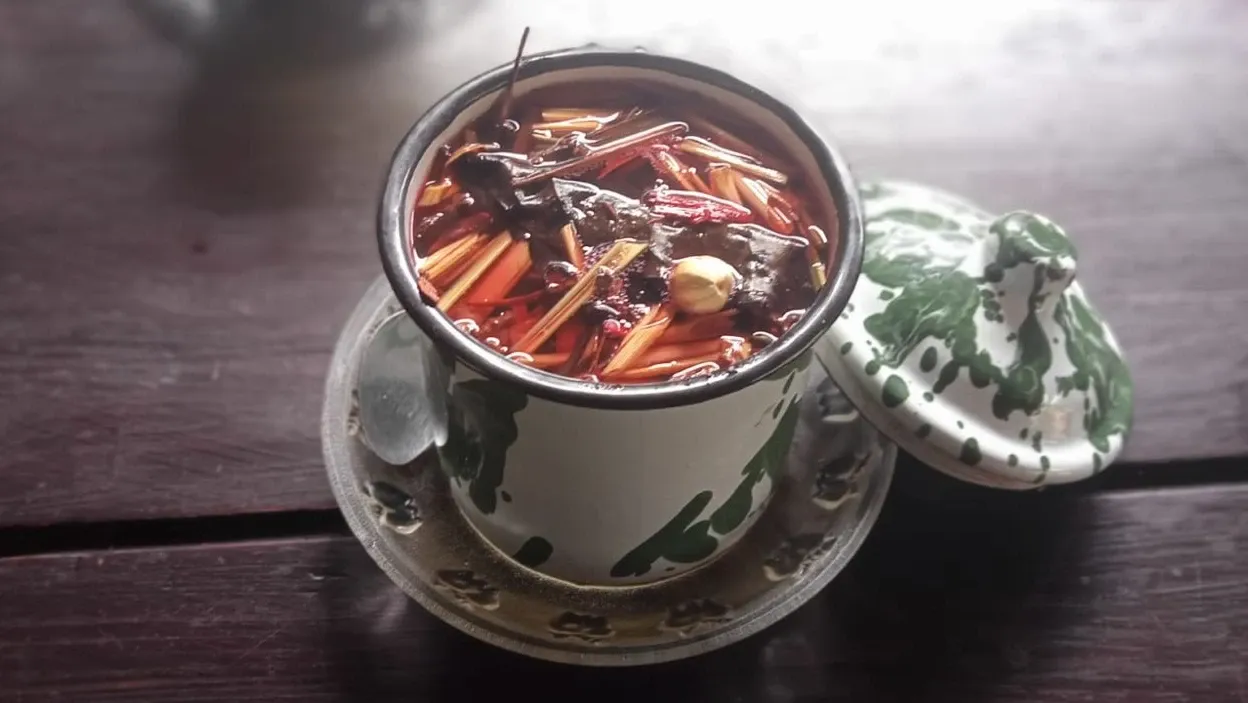
Ingredients: Secang wood, ginger, cinnamon, clove, lemongrass
Benefits:
- Warms the body
- Relieves cold symptoms
- Improves blood circulation
- Acts as an antioxidant
Insider Info: “Uwuh” means “trash” in Javanese, but don’t let that fool you. This drink is a treasure trove of health benefits!
The Science Behind the Sorcery: Modern Research on Jamu
Now, I know what you’re thinking – “This all sounds great, but where’s the proof?” Well, my skeptical friend, science has been catching up with tradition, and the results are pretty exciting. Let’s geek out for a moment and look at what modern research has to say about jamu drinks from Indonesia.
Turmeric
Turmeric, a staple in many jamu drinks, has been the subject of numerous studies. Its active compound, curcumin, has shown promising results in various areas:
- Anti-inflammatory Properties: A 2017 review published in the journal “Foods” highlighted curcumin’s potential in managing inflammatory conditions like arthritis and inflammatory bowel disease.
- Cancer Prevention: Research published in the “AAPS Journal” suggests that curcumin may have anticancer effects by influencing various molecular pathways involved in cancer development.
- Brain Function: A study in the “American Journal of Geriatric Psychiatry” found that curcumin may improve memory and mood in people with mild, age-related memory loss.
Ginger
Ginger, another jamu superstar, has also been put under the microscope:
- Nausea Relief: A review in the “Journal of the Academy of Nutrition and Dietetics” found that ginger effectively reduces nausea and vomiting, particularly in early pregnancy.
- Pain Reduction: Research published in “Arthritis Research & Therapy” suggests that ginger may have a role in reducing osteoarthritis-related pain.
Tamarind
Don’t let its sour taste fool you – tamarind is packed with health benefits:
- Antioxidant Powerhouse: A study in the “Journal of Food Science and Technology” highlighted tamarind’s potent antioxidant properties, which can help protect against cellular damage.
- Heart Health: Research in the “Journal of Ethnopharmacology” suggests that tamarind may have cardioprotective effects, potentially helping to lower cholesterol levels.
The Holistic Approach
While studying individual ingredients is valuable, researchers are also looking at jamu drinks from Indonesia as complete formulations:
- Diabetes Management: A study published in the “Journal of Ethnopharmacology” found that a traditional jamu formulation showed potential in managing blood glucose levels in diabetic rats.
- Immunomodulatory Effects: Research in the “BMC Complementary and Alternative Medicine” journal suggested that certain jamu formulations may have immune-boosting properties.
The Future of Jamu Research
As interest in natural remedies grows globally, more resources are being dedicated to studying jamu drinks from Indonesia. Institutions like the National Institute of Health Research and Development in Indonesia are leading the charge, conducting clinical trials and standardization efforts.
While the results are promising, it’s important to note that more research is needed to fully understand the efficacy and potential side effects of jamu drinks. Always consult with a healthcare professional before using jamu for medicinal purposes, especially if you’re on medication or have existing health conditions.
From Traditional to Trendy: The Modern Jamu Movement
Alright, let’s fast forward to today. Jamu drinks from Indonesia aren’t just your grandma’s secret recipe anymore – they’re having a serious moment in the spotlight. Let’s explore how this ancient tradition is getting a modern makeover and why it’s capturing the hearts (and taste buds) of health enthusiasts worldwide.
Jamu Goes Hipster: The Cafe Culture

Picture this: A sleek, minimalist cafe in the heart of Jakarta. The menu? A colorful array of jamu-inspired drinks, complete with Instagram-worthy presentations. This isn’t a fantasy – it’s the reality of jamu’s modern revival.
- Jamu Bars: Trendy establishments specializing in creative jamu concoctions are popping up in major Indonesian cities.
- Fusion Flavors: Traditional recipes are getting a twist with the addition of trendy ingredients like matcha, activated charcoal, and even CBD in some international markets.
- Aesthetics Matter: These new-age jamu drinks are designed to be as pleasing to the eye as they are to the palate. Hello, social media stardom!
Convenience is Key: Packaged Jamu Products
Not everyone has time to whip up a fresh batch of jamu every day. Enter: convenient, packaged jamu products.
- Ready-to-Drink Bottles: Major beverage companies are jumping on the jamu bandwagon, offering bottled versions of popular recipes.
- Jamu Powders and Capsules: For those who want the benefits without the taste, powdered jamu mixes and capsules offer a quick and easy alternative.
- Jamu-Inspired Beauty Products: The beauty industry is tapping into jamu’s potential, incorporating traditional ingredients into skincare and cosmetics.
Global Recognition: Jamu on the World Stage
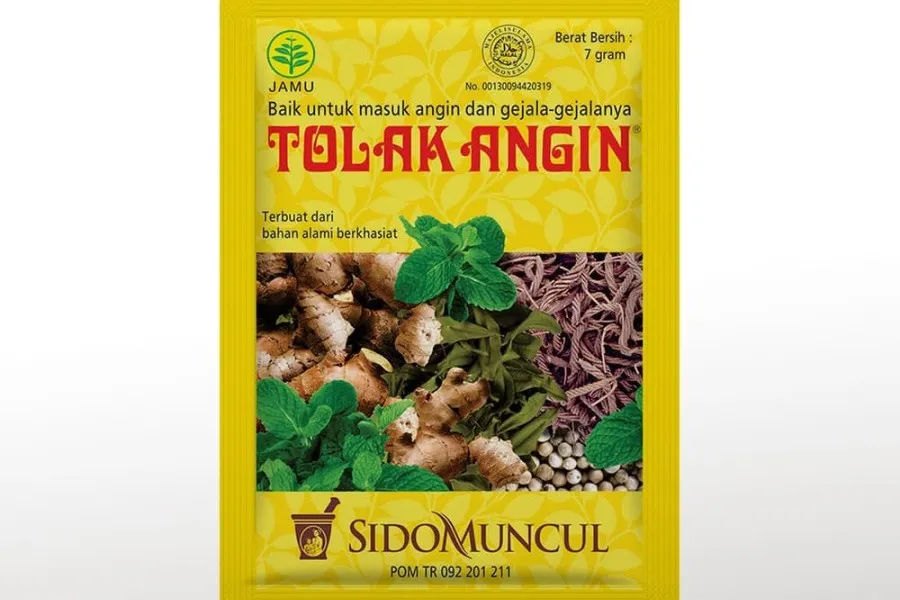
Jamu drinks from Indonesia are no longer a local secret – they’re gaining recognition on the global health and wellness scene.
- Wellness Retreats: Luxury resorts in Bali and beyond are offering jamu as part of their wellness programs.
- International Exports: Indonesian companies are exporting jamu products to health food stores and specialty shops worldwide.
- Celebrity Endorsements: International celebrities and influencers are sharing their love for jamu, introducing it to new audiences.
The Science-Backed Approach: Modernizing Production
As demand grows, so does the need for standardization and quality control in jamu production.
- Research and Development: Companies like Putra Farma Yogyakarta are investing in R&D to create jamu formulations that blend traditional wisdom with modern scientific understanding.
- Quality Control: Stricter regulations and testing ensure that commercially produced jamu drinks meet safety and efficacy standards.
- Sustainable Sourcing: There’s a growing emphasis on ethically and sustainably sourcing jamu ingredients to meet increased demand without compromising quality or environmental impact.
DIY Jamu Movement: Bringing Tradition Home
While convenience products are on the rise, there’s also a growing interest in making jamu at home.
- Online Tutorials: YouTube channels and social media influencers are sharing easy-to-follow jamu recipes, making the tradition accessible to a new generation.
- Jamu Workshops: Cooking schools and wellness centers are offering classes on traditional jamu preparation techniques.
- Modern Kitchen Gadgets: Specialized jamu-making tools are being marketed to home enthusiasts, making the process easier and more appealing.
The Future of Jamu: What’s Next?
As jamu drinks from Indonesia continue to gain popularity, we can expect to see even more innovation in the field:
- Personalized Jamu: AI and big data might soon be used to create personalized jamu blends based on individual health profiles.
- Jamu in Functional Foods: Don’t be surprised if you start seeing jamu-inspired energy bars, smoothie bowls, or even ice cream hitting the shelves.
- Clinical Applications: As research progresses, we may see jamu-based formulations being used in clinical settings as complementary treatments.
The modern jamu movement is a perfect example of how ancient wisdom can be adapted for contemporary lifestyles. It’s not just about preserving tradition – it’s about evolving and innovating while staying true to the core principles of natural healing.
Embracing Jamu: Tips for Incorporating It Into Your Lifestyle
So, you’re sold on the idea of jamu drinks from Indonesia and want to give them a try. Awesome! Here are some practical tips to help you integrate jamu into your daily routine:
- Start Simple: Begin with basic, well-known jamu recipes like kunyit asam (turmeric tamarind) or beras kencur. These are generally mild and easy to prepare.
- Listen to Your Body: Everyone reacts differently to herbal remedies. Start with small amounts and observe how your body responds.
- Consistency is Key: Like any wellness practice, the benefits of jamu are often cumulative. Try incorporating it into your daily routine for at least a few weeks.
- Quality Matters: Whether you’re buying packaged jamu or making it yourself, ensure you’re using high-quality, fresh ingredients.
- Experiment with Flavors: Don’t like the taste of a particular jamu? Try adding honey, lime, or mixing it with coconut water to make it more palatable.
- Time it Right: Some jamu drinks are energizing and best consumed in the morning, while others are more soothing and suitable for evening consumption.
- Pair with a Healthy Lifestyle: Remember, jamu is not a magic bullet. It works best when combined with a balanced diet, regular exercise, and good sleep habits.
- Educate Yourself: Learn about the ingredients in your jamu and their potential benefits and side effects. Knowledge is power!
- Consult a Professional: If you have existing health conditions or are on medication, always consult with a healthcare professional before adding jamu to your routine.
- Enjoy the Experience: Preparing and drinking jamu can be a mindful, enjoyable ritual. Take the time to appreciate the process and connection to tradition.
The Global Impact of Jamu: More Than Just a Drink
As jamu drinks from Indonesia continue to gain popularity worldwide, their impact extends far beyond individual health benefits. Let’s explore the broader implications of this growing trend:
Economic Boost for Indonesian Farmers
The increased demand for jamu ingredients is providing new opportunities for Indonesian farmers, particularly those growing herbs and spices used in traditional recipes. This can lead to:
- Improved livelihoods for rural communities
- Preservation of traditional farming practices
- Incentives for sustainable agriculture
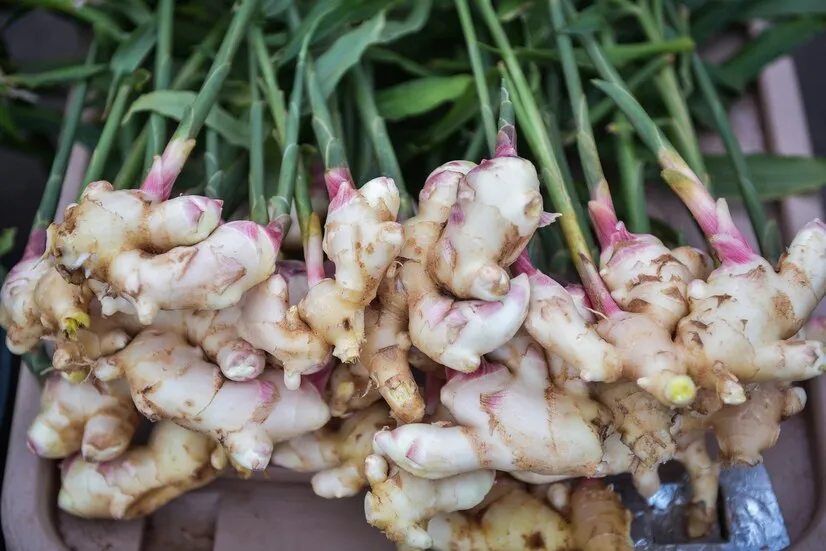
Cultural Exchange and Appreciation
As jamu gains recognition globally, it’s also sparking interest in Indonesian culture and traditional medicine. This cultural exchange can foster:
- Greater understanding and appreciation of Indonesian heritage
- Increased tourism to Indonesia, particularly wellness tourism
- Collaboration between Indonesian herbalists and international researchers
Biodiversity Conservation
The growing interest in jamu is highlighting the importance of Indonesia’s rich biodiversity. This attention can contribute to:
- Efforts to preserve native plant species used in jamu
- Research into sustainable harvesting practices
- Increased awareness of the need to protect Indonesia’s natural habitats
Bridging Traditional and Modern Medicine
The scientific interest in jamu is creating opportunities for collaboration between traditional healers and modern medical researchers. This synergy could lead to:
- Development of new, evidence-based herbal remedies
- Integration of traditional wisdom into modern healthcare practices
- Greater respect for indigenous knowledge systems
Conclusion: Jamu – A Timeless Tradition for Modern Wellness
As we’ve journeyed through the world of jamu drinks from Indonesia, it’s clear that this ancient tradition has found its place in our modern world. From its rich history rooted in Indonesian culture to its current status as a global wellness trend, jamu represents a beautiful fusion of tradition and innovation.
The growing interest in jamu isn’t just a passing fad. It reflects a broader shift towards natural, holistic approaches to health and wellness. As we face the challenges of modern life – stress, environmental toxins, chronic diseases – the wisdom encapsulated in jamu offers a gentle, time-tested approach to maintaining balance and vitality.
But perhaps the most beautiful aspect of jamu is its adaptability. While staying true to its core principles, jamu has shown that it can evolve with the times. Whether it’s enjoyed as a daily tonic, a trendy cafe beverage, or a scientifically studied herbal remedy, jamu continues to offer something for everyone.
As we look to the future, the potential of jamu seems boundless. With ongoing research, innovative product development, and growing global appreciation, jamu drinks from Indonesia are poised to play an increasingly important role in the world of natural health and wellness.
So, whether you’re a health enthusiast, a cultural explorer, or simply curious about natural remedies, why not give jamu a try? Who knows – this ancient Indonesian tradition might just be the missing piece in your modern wellness puzzle.
Remember, health is a journey, not a destination. And with jamu, it’s a journey filled with flavor, tradition, and the wisdom of generations. Here’s to your health – or as they say in Indonesia, “Sehat selalu!”
FAQ: Your Burning Questions About Jamu Answered
- Q: Is jamu safe for everyone to drink?
A: While jamu is generally considered safe, it’s not suitable for everyone. Pregnant women, people with certain medical conditions, or those on medication should consult a healthcare professional before consuming jamu. Always start with small amounts to see how your body reacts. - Q: How often should I drink jamu?
A: The frequency depends on the type of jamu and your individual needs. Some people enjoy jamu daily as a general tonic, while others use it occasionally for specific health concerns. It’s best to start with small amounts a few times a week and adjust based on how you feel. - Q: Can I make jamu at home, or do I need to buy it?
A: You can definitely make jamu at home! Many recipes are simple and use ingredients available in most grocery stores or Asian markets. However, if you’re short on time or prefer convenience, there are many packaged jamu products available as well. - Q: Does jamu have any side effects?
A: While jamu is generally well-tolerated, some people may experience side effects, especially if consumed in large quantities. These can include stomach upset, allergic reactions, or interactions with medications. It’s important to listen to your body and consult a healthcare professional if you have concerns. - Q: How long does it take to see benefits from drinking jamu?
A: The timeframe for experiencing benefits can vary widely depending on the individual and the specific jamu recipe. Some people report feeling effects immediately, while others may notice changes over weeks or months of consistent use. Remember, jamu is typically used as a long-term approach to wellness rather than a quick fix.

